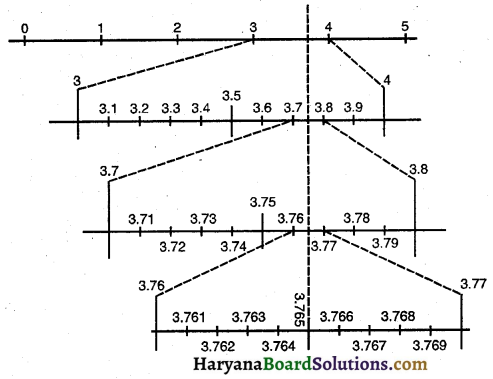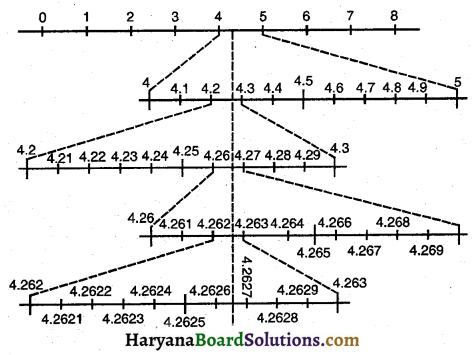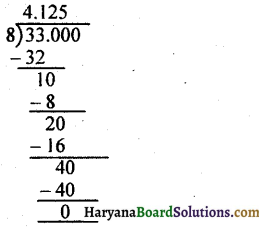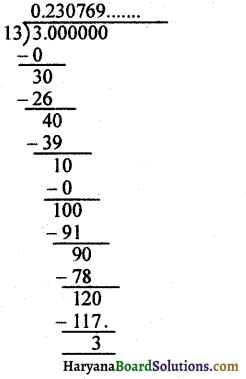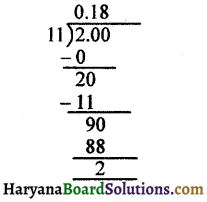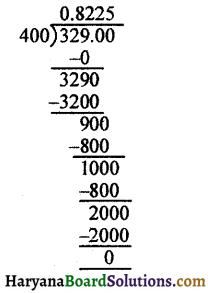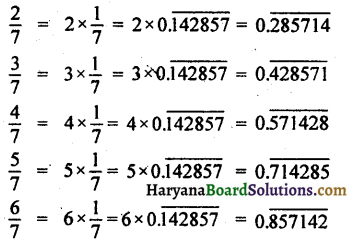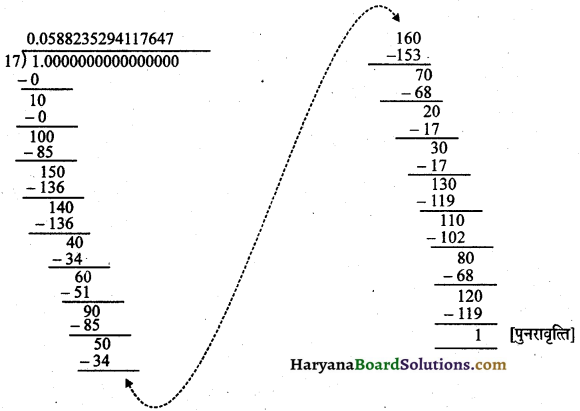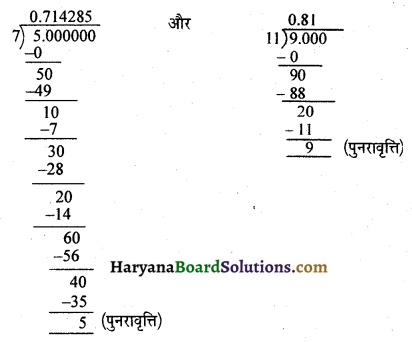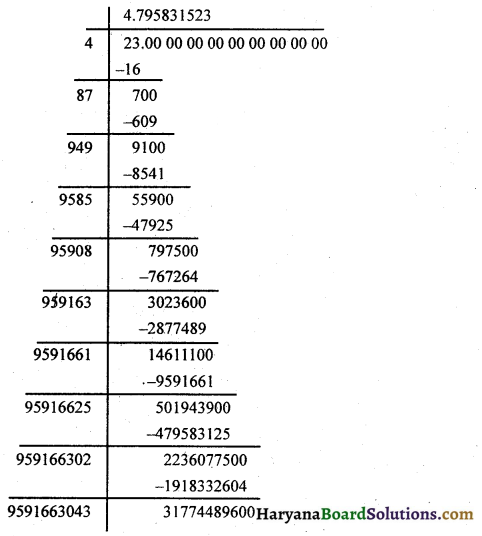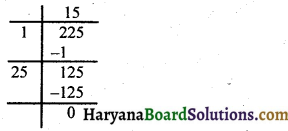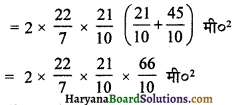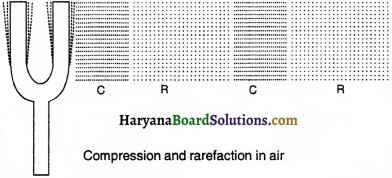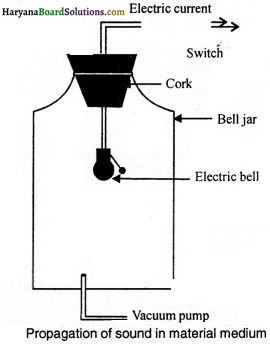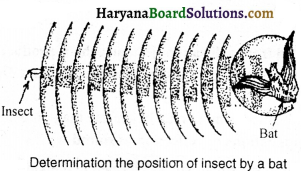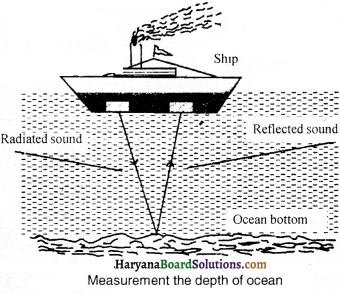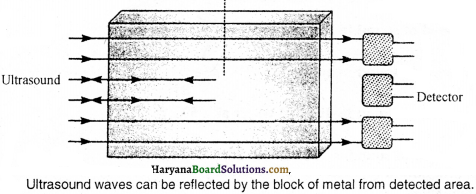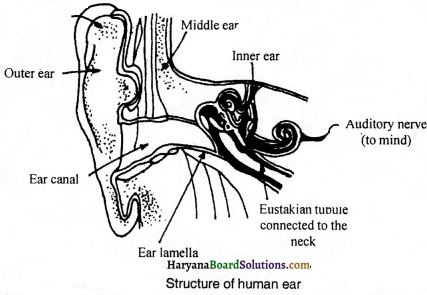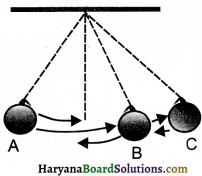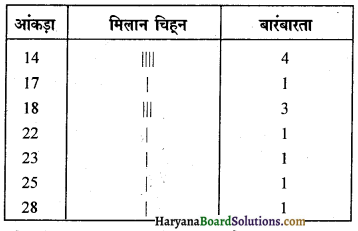Haryana State Board HBSE 9th Class Science Solutions Chapter 15 Improvement in Food Resources Textbook Exercise Questions and Answers.
Haryana Board 9th Class Science Solutions Chapter 15 Improvement in Food Resources
HBSE 9th Class Science Improvement in Food Resources Intext Questions and Answers
Question from Sub-section 15.1
Question 1.
What do we get from cereals, pulses, fruits and vegetables ?
Answer:
From these, we get proteins, carbohydrates, fats, vitamins and minerals, which are the main and required constituents of our food. These all constituents are helpful for our body development, growth and health.
Questions from Sub-section 15.1.1
Question 1.
How do biotic and abiotic factors affect crop production ?
Answer:
Biotic factors: Diseases, insects and nematodes.
Abiotic factors: Drought, salinity, water logging, heat, cold, frost, etc., decrease the production of crops.
Question 2.
What are the desirable agronomic characteristics for crop improvements ?
Answer:
Tallness and profuse branching are desirable characters for fodder crops. Dwarfness is required in cereals and less nutrients are consumed by these crops. Thus, developing varieties of desired agronomic characters help to give higher productivity.

Questions from Sub-section 15.1.2
Question 1.
What are macro-nutrients and why are they called macro-nutrients?
Answer:
Macro-nutrients :
Such nutrients which are required by the plants in large quantities are called macro-nutrients. Due to their requirement in large quantities, these are called macro-nutrients, e.g., sulfur, nitrogen, phosphorus potassium, calcium, magnesium, etc;
Question 2.
How do plants get nutrients?
Answer:
Plants get the nutrients in the form of liquid from earth. These nutrients are also available in manures and fertilizers, which plants get easily and in large quantities.
Questions from Sub-section 15.1.2
Question 1.
Compare the use of manures and fertilizers in maintaining soil fertility.
Answer:
The comparison of manures and fertilizers to maintain the fertility of soil is as following ;
Manures
1. Manures are required in large quantities.
2. Continuous use of manures is not harmful to the soil.
3. By the use of manures, production always increases.
4. Using process of manure and crop production is delayed.
5. Use of manures is not costly.
6. Transportation and storage is unconvenient.
Fertilizers:
1. Fertilizers are required in small quantities.
2. Continuous use of fertilizers is harmful to the soil.
3. Unnecessary use of fertilizers can decreased the production.
4. By using fertilizers, crop production can be get early.
5. Use of fertilizers is costly.
6. Transportation and storage is convenient.

Questions from Sub-section 15.1.3
Question 1.
Which of the following conditions will give the most benefits? Why?
(a) Farmers use high-quality seeds, do not adopt irrigation or use fertilizers.
(b) Farmers use ordinary seeds, adopt irrigation and use fertilizers.
(c) Farmers use good quality seeds, adopt irrigation, use fertilizers and use crop protection measures.
Answer:
In the above three conditions, the third condition (c) is best because in this condition, seeds are of
high quality, i.e., high-level production. Irrigation is helpful in the nutrition of plants, fertilizers supply the nutrients to plants that are required for the development, growth and production of the plants. Crop protection prevents the crops from various harms and in fact, production increases. Hence, condition (c) is best for farmers.
Questions from Sub-section 15.1.3
Question 1.
Why should preventive measures and biological control methods be preferred for protecting crops?
Answer:
The preventive measures for the protection of crops are: timely sowing of crops, proper seedbed preparation, intercropping and crop rotation also help in weed control. Any type of poisonous chemical such as pesticides, weedicides, etc. is not used. Some other preventive measures against pests are the use of resistant varieties and summer plowing, in which fields are plowed deep in summers to destroy weeds and pests. In this way, soil pollution is not taking place and no extra amount is to be consumed on these measures. Hence, these are also useful economically.
Question 2.
What factors may be responsible for the losses of grains during storage?
Answer:
During storage, two factors are responsible for the loss of grains:
(1) Biotic factors: Insects, rodents, fungi, mites, bacteria, etc.
(2) Abiotic factors: Lack of appropriate moisture and temperature.
Questions from Sub-section 15.2.1
Question 1.
Which method is commonly used for improving cattle breeds and why?
Answer:
The cross-breed method is used for improving cattle breeds so that the lactation and resisting power against diseases increase in such cattle.

Questions from Sub-section 15.2.2
Question 1.
Discuss the implications of the following statement:
“It is interesting to note that poultry is India’s most efficient converter of low fiber foodstuff (which is unfit for human consumption) into highly nutritious animal protein food.”
Answer:
Poultry has this quality that low fiber foodstuffs which are unfit for human consumption that means on the basis of quality these are totally unfit for human consumption, to those it has the ability to convert into highly nutritious animal protein food. Poultry eggs and meat are enriched with proteins and this diet is considered to be a protein-rich diet for humans
Questions from Sub-section 15.2.2
Question 1.
What management practices are common in dairy and poultry farming?
Answer:
There is a big similarity between animal husbandry and poultry farming :
(1) Both are required clean, well-ventilated, and moisture-less homes.
(2) Both are supplied well balanced and enough diet.
(3) Both suffer from a number of diseases that are prevented by appropriate vaccination and both are also treated by the physicians
(4) Both have economic importance, i.e., both are domesticated for economic profit.
(5) Both the high-quality breeds are domesticated to earn a big profit.
Hence, both are similar under the management system.
Question 2.
What are the differences between broilers and layers in their management?
Answer:
Broiler farming is done for meat purposes, whereas layer farming is undertaken for egg production. This is the main difference between them. Broilers and chickens are fed with protein, fats, and vitamin-rich supplementary food for good growth rate and better feed efficiency. Care is taken to avoid mortality and to maintain feathering and carcass quality, whereas the layer requires this type of feeding in less quantity. The housing, nutritional and environmental requirements of broilers are somewhat different from those of egg-producing layers.
Questions from Sub-section 15.2.3
Question 1.
How are fish obtained?
Answer:
Fish are obtained in two ways:
(1) From natural resources,
(2) From fish farming or culture fishery.
Fish are available both in freshwater (non-saline water) and seawater (saline water). Freshwater fish varieties are: catla, rohu, mullets, millions, etc. whereas marine fish varieties include: pomfret, mackerel, tuna, sardines, Bombay duck, etc. Mullets, bhetki, pearl spots, prawns, mussels, and oysters are cultured in seawater. Fish farming is done in freshwater or non-saline water.

Question 2.
What are the advantages of composite fish culture?
Answer:
More intensive fish farming can be done in composite fish culture systems. In such a system, a combination of five or six fish species is used in a single fishpond. These species are selected so that they do not compete for food among them having different types of food habits:
(1) The food available in all the parts of the pond is used.
(2) Weeds can be controlled by bio-practices in composite fish culture.
(3) Without competing with each other, fish yield increases in the pond.
Questions from Sub-section 15.2.4
Question 1.
What are the desirable characteristics of bee varieties suitable for honey production?
Answer:
It is the natural desirable character in variety that it is suitable for increasing honey production. Honey collection and the defense of the beehive are both qualities in Italian bees. They stay in a given beehive for long periods and are freed very well, it increases honey production.
Question 2.
What is pasturage and how is it related to honey production?
Answer:
Pasturage is the natural grassy field where grass for animals and other flowering plants are available. By these flowers, the bees make honey from nectar and pollen collection. The taste of honey depends upon the pasturage, or the flowers available to the bees.
For Examples; honey of bruce flowers, honey of neem flowers, and honey of eucalyptus flowers. The quality of honey is determined by the taste of honey.

HBSE 9th Class Science Improvement in Food Resources Textbook Questions and Answers
Question 1.
Explain any one method of crop production which ensures high yield.
Answer:
One way of incorporating desirable characters into crop varieties is by hybridization. Hybridization is the mating or crossing of genetically different plants. The progeny resulting from hybridization is known as a hybrid. Hybridization refers to crossing between genetically dissimilar plants. This crossing may be intervarietal (between different varieties), interspecific (between two different species of the same genus), or intergeneric (between different genera). Another way of improving the crop is by introducing a gene that would provide the desired characteristics. This results in genetically modified crops.
Question 2.
Why are manures and fertilizers used in fields?
Answer:
Manures and fertilizers have macro-nutrients. There is a lack of nutrients in the soil as crops absorb nutrients from the soil continuously. Manures and fertilizers are mixed in the fields to fulfill the loss of nutrients. The land proves to be barren and the fertility of the land decreases if we do not fulfill the loss. The loss of these nutrients can also be completed by crop rotation.
Question 3.
What are the advantages of intercropping and crop rotation?
Answer:
The following are the advantages of intercropping and crop rotation:
(1) It maintains the fertility of the land. It does not become barren.
(2) Two or more crops can be grown in a year with good harvests.
(3.) Weeds and insects are destroyed.
(4) With the increase of production, farmers’ income also increases.
(5) Threat of unsuccessful crop production also decreases.
Question 4.
What is genetic manipulation? How is it useful in agricultural practices?
Answer:
The high yield of the crops is dependent on the characteristics of their varieties. If we want to improve the crop varieties, then genes with desirable characteristics are used because only genes establish what characteristics of the plants will be, i.e., crop production will increase or decrease. Hence, a change in genes is called genetic manipulation. Today, by using this technique we have got high-quality seeds and crop production has increased the number of times. Especially farmers and gardeners have got an advantage by this technique.

Question 5.
How do storage grain losses occur?
Answer:
(A) Biotic Factors: Following biotic factors are responsible for storage losses of grain :
1. Rodents, birds, and other insects: Rats, squirrels, etc. make a loss to the cereals kept in fields, houses, and in warehouses. Loss is caused to foodgrains due to their hair, feathers, and excreta.
2. Micro-organisms: Various insects and molds change the structure of the storage even after the chemical changes and in this way they cause loss of foodgrains.
3. Insects: Various types of insects damage the raw food storage, e.g., cereals and pulses.
4. Enzymes: These are biocatalysts that are found in nerve cells. These destroy the fruits, and vegetables which are stored a long time.
(B) Abiotic Factors: Following abiotic factors are responsible in storage losses of grain:
1. Moisture: There should not be high moisture at the time of storage. Moisture in the foodgrains should not exceed 14% in relation to its weight.
At high moisture in the foodgrains:
(1) Size of the grains develop.
(2) Microorganisms and enzymes cause more activity.
(3) Possibility of insect-infection increases.
(4) Possibility of growing molds in the moist air increases.
2. Temperature: At low temperatures, enzymes, insects and other micro-organisms do not set more active. For this reason, profligate food materials are kept in cold storage.
3. Pots for storage: Pots used in storage should not be made of lead, metal or nickel because these are toxic and the possibility of toxicity in foodgrains increases.
Question 6.
How do good animal husbandry practices benefit farmers?
Answer:
Animal husbandry practices benefit farmers as follows:
(1) Farmers get milk from dairy animals (milch animals).
(2) In animal husbandry, draught animals are useful for agricultural work and carting.
(3) In animal husbandry, due to economical advantages, farmers get occupational work.
(4) Agriculture by animals provides an extra and round year income.
(5) Biogas and organic matter are prepared from the excreta of animals domesticated by the farmers.
(6) Animal husbandry provides wool, meat, skins, and bones.

Question 7.
What are the benefits of cattle farming?
Answer:
Two main benefits of cattle farming are as under:
1. To get foodstuffs:
The main objective of cattle farming is to produce food products in which the main production is of milk and meat. Furthermore, we get wool, skins and bones from cattle farming. In this way, the objective of cattle farming is related to economic reasons.
2. To get assistance in agricultural activities:
To get assistance in agricultural activities is the main second objective of cattle farming. Oxen, mule, camel, etc. are used in agricultural works such as tilling and carting. Even today low-level farmers are also dependent on animals for agricultural work.
Question 8.
For increasing production, what is common in poultry, fisheries, and bee-keeping?
Answer:
This is only the main common factor to increase the production that the varieties of organisms should be of having disease resistance efficiency, be favorable to the environment, and have high yielding capacity. The major objective for the domestication of these three organisms is to earn the money for the highest yielding. All three organisms are used in agricultural activities as well as in supplementary occupations where the farmer earns income and there is no need to devote their full time.
Question 9.
How do you differentiate between capture fishing, mariculture and aquaculture?
Answer:
Some marine fish of high economic value are farmed in seawater. It is called capture fishing mariculture. The provision of natural environment in the ponds for fish farming is called ‘aquaculture’. In ponds, fish farming is done in non-saline water or freshwater whereas in marine fisheries the fishing is done in saline water.

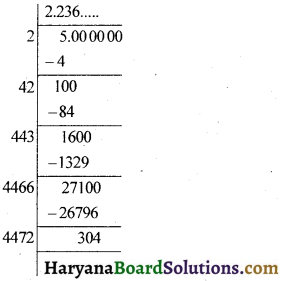
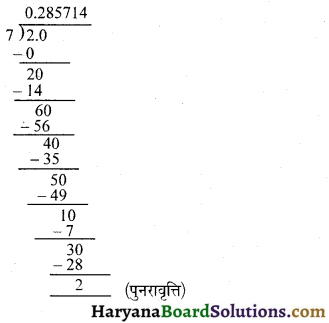
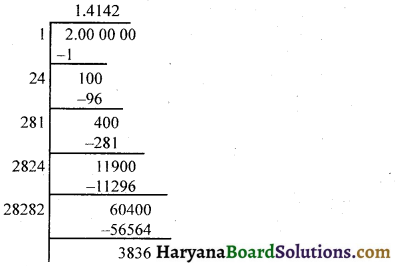
![]()

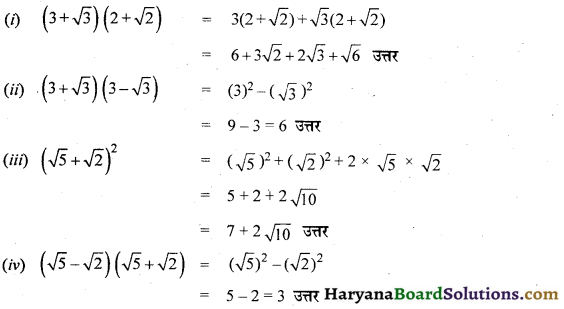
![]()



